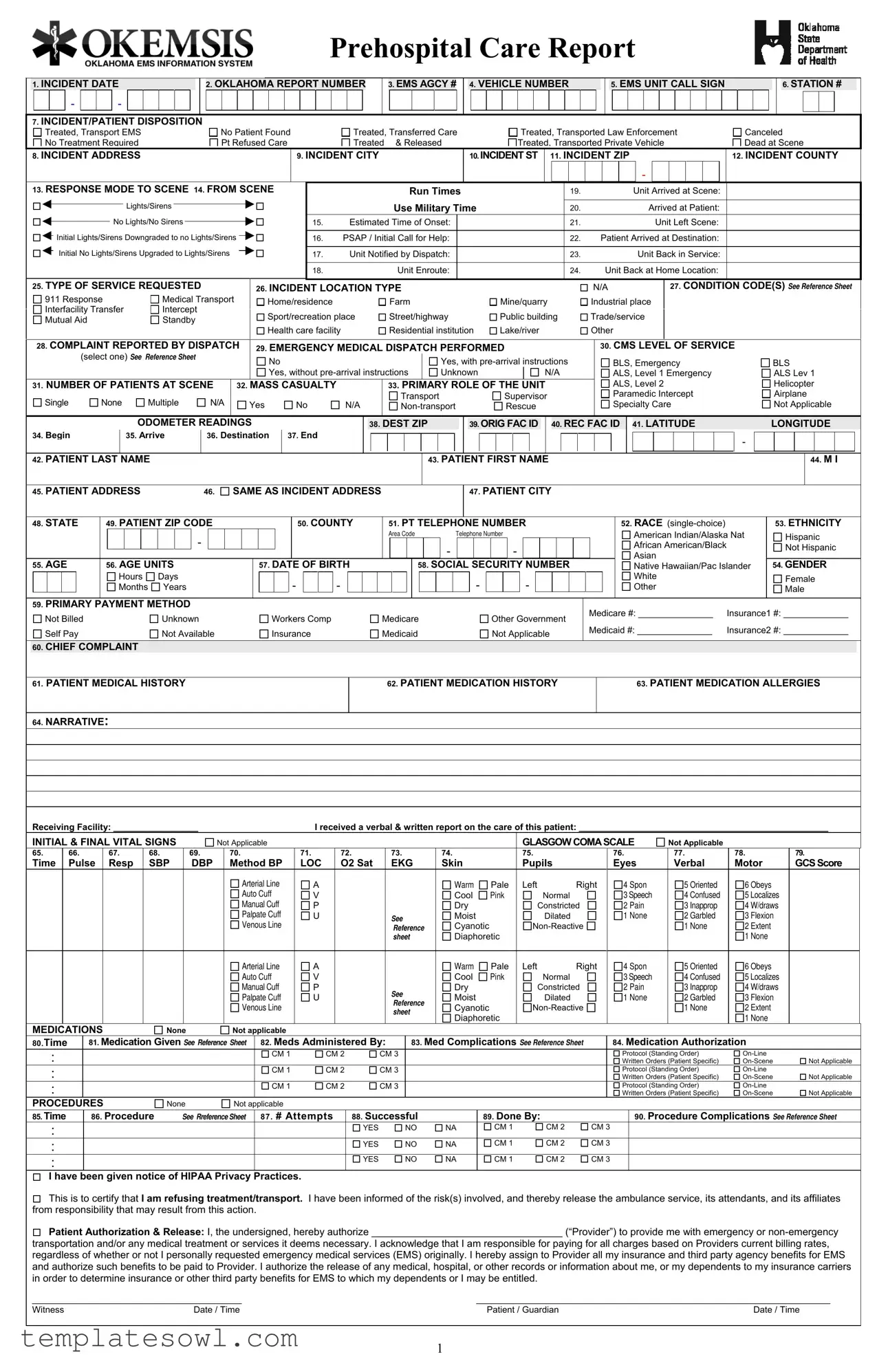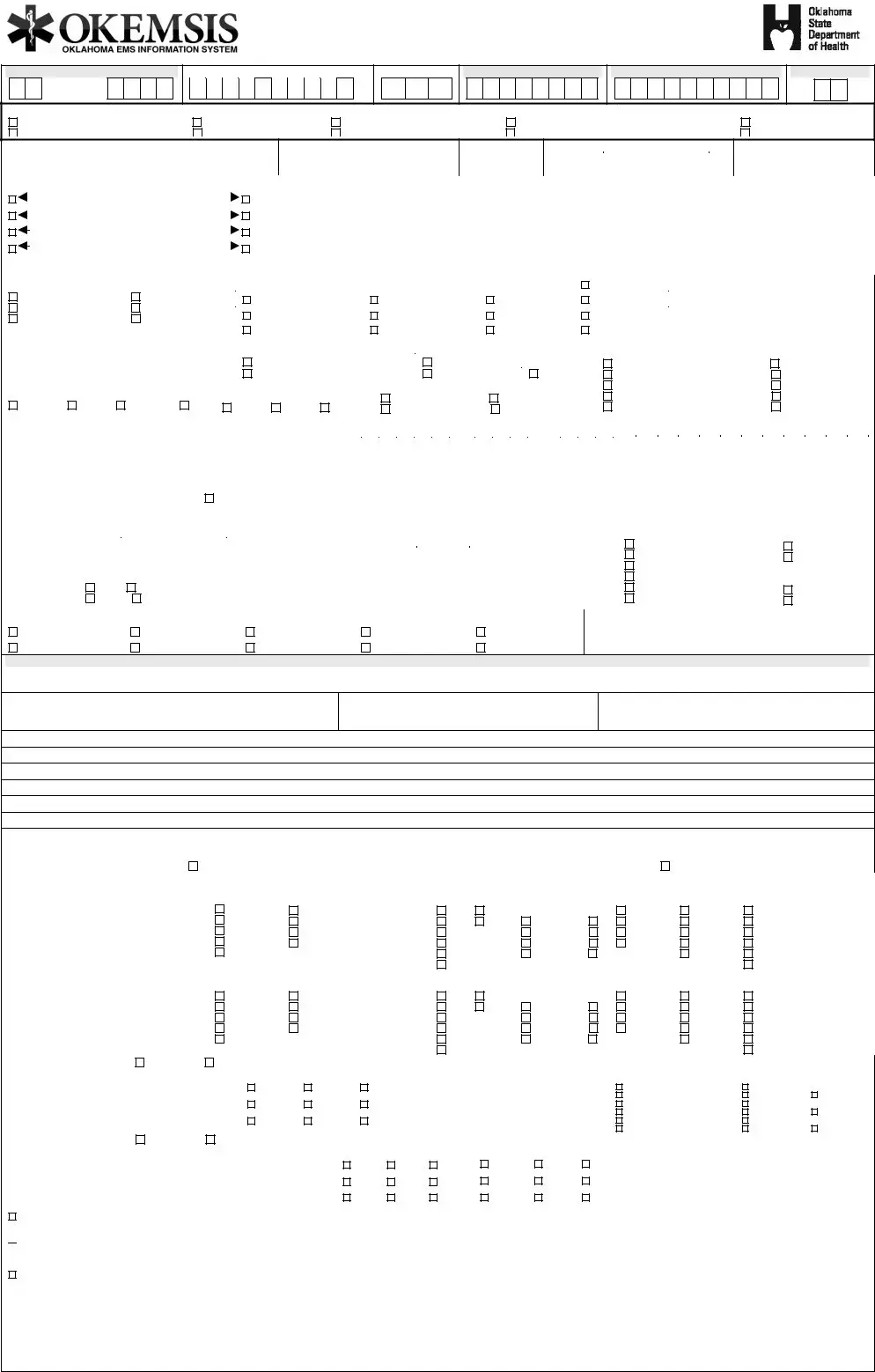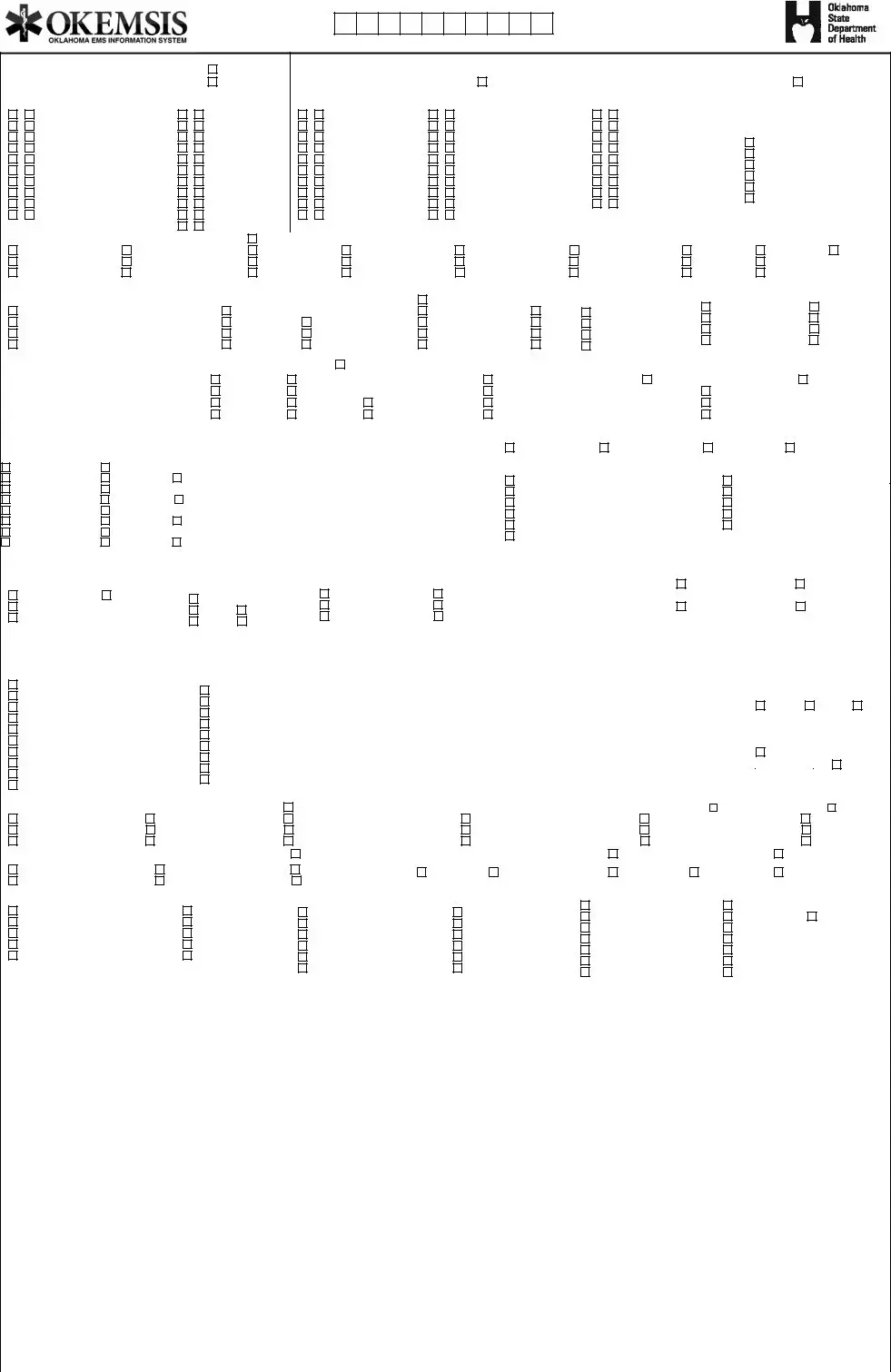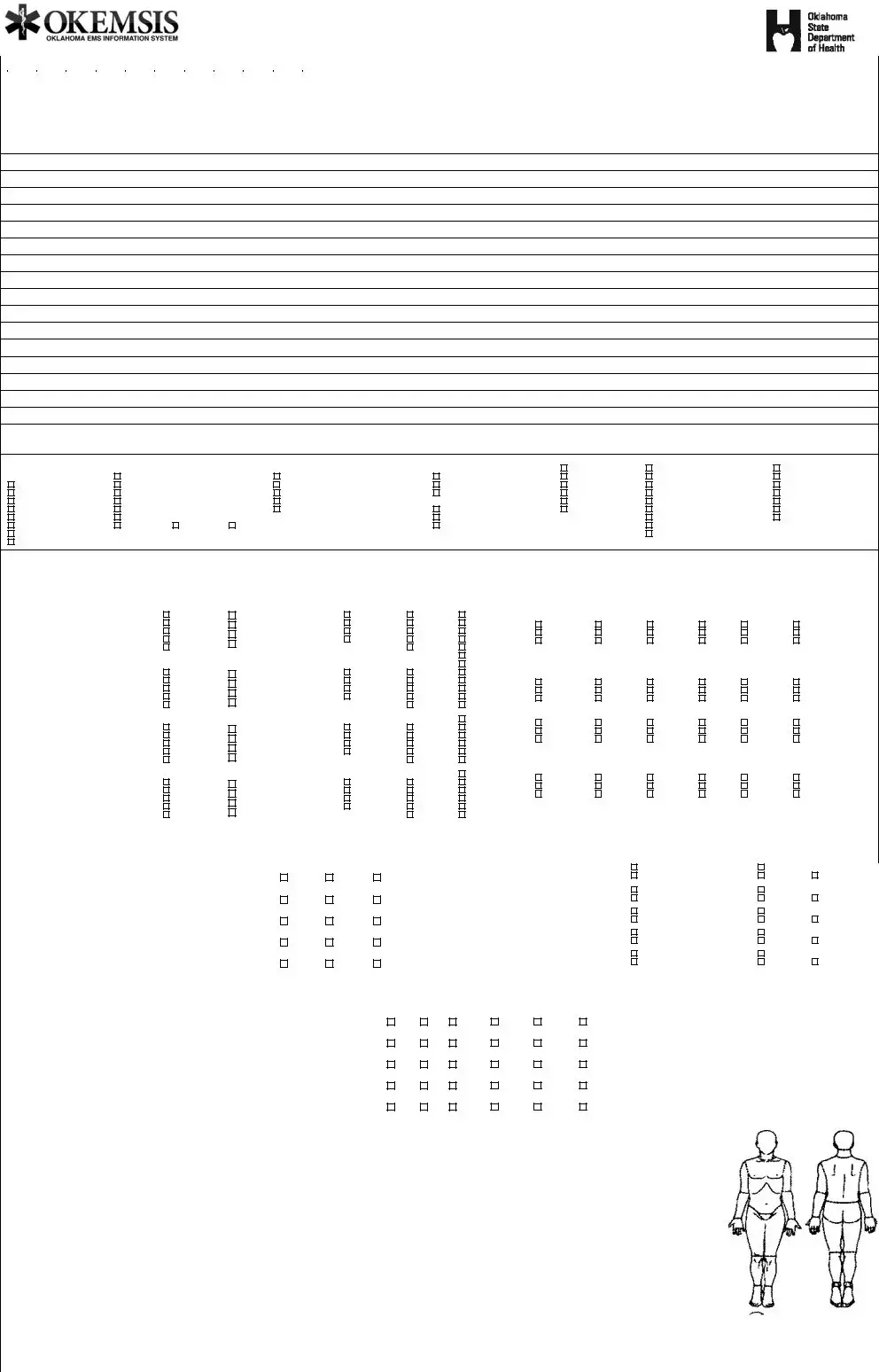What is the purpose of the Prehospital Care Report (PCR)?
The Prehospital Care Report serves as a crucial document that records the details of prehospital care provided to patients by emergency medical services. This report includes essential information such as the date of the incident, patient demographics, assessment findings, interventions performed, and disposition of the patient after treatment. By documenting these facts, the PCR helps ensure continuity of care and provides valuable data for future medical assessments and quality improvement initiatives.
What information is collected in the PCR?
The PCR collects a wide range of information including, but not limited to, the incident date, Oklahoma report number, EMS agency details, vehicle number, patient demographics, nature of the incident, chief complaint, medical history, and assessment findings. It also documents vital signs, medications administered, procedures performed, and the final disposition of the patient, such as whether they were treated and transported or refused care. This comprehensive approach facilitates thorough patient care and accurate record-keeping.
Who is responsible for completing the PCR?
Typically, the PCR is completed by the emergency medical personnel on the scene, such as paramedics and emergency medical technicians (EMTs). Each crew member involved in patient care contributes to the report based on their role and the care provided. It is important that the information captured is accurate and complete to reflect the interventions made and patient outcomes.
How does the PCR impact patient care?
The PCR directly impacts patient care by providing a clear account of the treatment administered and the patient's condition upon arrival at the hospital. Emergency departments rely on this report to understand the patient's medical background and the prehospital care they received. Accurate and detailed documentation can lead to better treatment decisions and improved health outcomes for patients.
What happens if the patient refuses care?
If a patient refuses care, this must be clearly documented in the PCR. The report will note that the patient was informed of the risks associated with their decision to refuse treatment. It is also essential to have the patient or their guardian sign a release form to acknowledge their decision. This documentation can protect both the healthcare provider and the patient by ensuring that informed consent was considered.
Are there specific codes used in the PCR, and what do they signify?
Yes, the PCR includes specific codes, often referenced in a supplementary sheet, which signify various elements such as the condition codes, type of service requested, and complaint categories. These codes allow for standardization in reporting and facilitate accurate data collection and analysis. Accurate coding helps in efficiently communicating the nature of the incident and the care provided.
Can medical information be shared without consent?
Under HIPAA (Health Insurance Portability and Accountability Act) regulations, medical information can generally only be shared with consent. However, there are exceptions for emergency situations where patient care is necessary. The PCR includes a section in which patients typically provide their authorization for information release, which allows providers to share critical information with other medical facilities and insurance companies.
What is the significance of the response mode to the scene?
The response mode indicates the urgency with which the EMS unit responded to the scene. It could be categorized as lights and sirens or no lights and no sirens. This aspect of the report is vital for understanding how quickly care was initiated based on the perceived severity of the incident. Documenting the response mode helps in evaluating the effectiveness of emergency response protocols.
How does the PCR support legal and administrative processes?
The PCR serves as a legal document that can be used in investigations or proceedings regarding the care that the patient received. Accurate and thorough documentation helps protect EMS providers against liability and ensures transparency in patient care processes. Administratively, analysis of PCR data can contribute to improving emergency services and healthcare protocols.
Is training required for those completing the PCR?
Yes, training is required for personnel completing the PCR. EMS providers must understand the importance of accurate documentation and the technical aspects of the form. Regular training sessions on how to properly fill out the PCR, including coding and legal considerations, ensure that all team members are competent and compliant with best practices in documentation.



 This is to certify that
This is to certify that 
